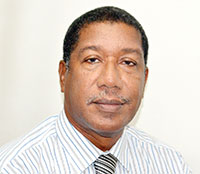IT has been more than twenty-nine years since I started this weekly column. In 1994, the column was named The Dentist Speaks and in my accompanying picture, I sported an afro hairstyle and a beard. Notwithstanding, over the years, my central theme generally remained the same.
From a philosophical standpoint, two very important facts must first be considered when contemplating oral health. The first fact concerns the role of the dental practitioner. While it is quite common for Guyanese to associate dentists with the extraction of teeth, the reality is that the dentist should be related to exactly the opposite, that is, with the preservation of teeth. So, persons should consider the conservation of their natural dentition as a matter of priority rather than taking the radical extraction approach which they could invariably regret.
The other critical point is that while the most common disease affecting mankind today is dental caries (tooth decay), it can hardly be expected that the number of dental personnel accessible to the public is adequate. Further, the cost of dental services universally is exorbitant, a reality that more than ever justifies every individual’s preventive approach to oral disease.
As a former senior administrator in the public sector, I can say that convincing the politicians who are responsible for appropriating funds for capital expenditure is no “walk in the park” as dental disease is not commonly given importance simply because no one dies from it.
Fortunately, it is theoretically possible to never visit the dentist and yet have a healthy mouth. Dental problems are made simple because nearly all dental diseases originate from a single cause. That cause is known as bacterial or dental plaque. It is a sticky, transparent film formed by saliva itself and which covers the teeth. Special types of bacteria (germs) found in the mouth live in the plaque and feed on food remnants, especially sugar and starch.
The bacteria that inhabit the dental plaque convert sugar to acid as part of their digestive process. It is this acid that damages the enamel surface of the teeth when it is allowed to be exposed to it for more than 48 hours. What happens is that acid has the property of removing calcium from tissues. The hardness of teeth and bone is due to their high calcium content. Therefore, when the calcium is removed from the tooth surface, it becomes soft and pitted. This process continues and a cavity is formed. The cavity is called a carie.
You can recognise caries in your own mouth by checking on the surfaces for brown or chalky white spots. On the back teeth, called premolars and molars, the initial stage of decay appears as dark lines and patches occupying the fissures (grooves) and fossae (pits) of the occlusal (biting) surfaces of the teeth. The younger the person, the easier it is for the teeth to decay.
The most important aspect of oral health education is the effective control of plaque. Remember it is not how often you brush or floss that matters but how thorough you do so.



.jpg)









